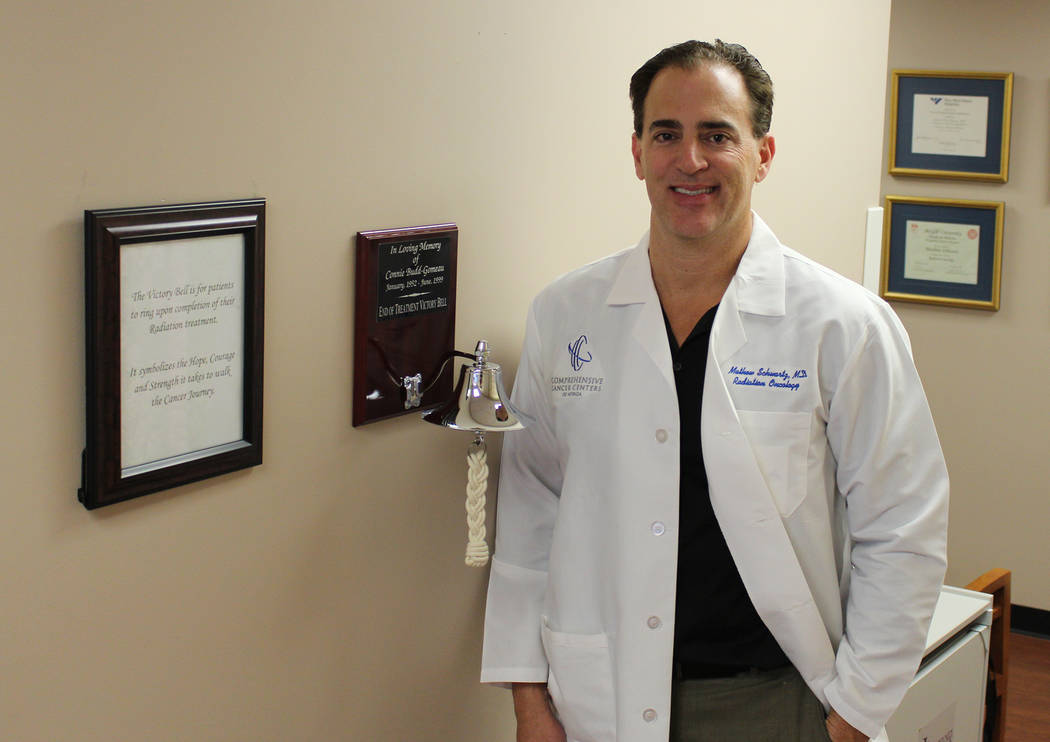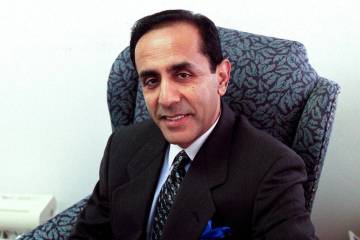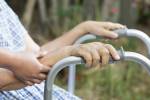Ringing victory bell signals end of treatment
Breast cancer runs in Anne Marie Budd-Baldwin’s family. Several of her cousins have been diagnosed with the disease that also claimed the life of her beloved sister, Henderson resident Connie Budd-Gomeau, nearly two decades ago.
So it didn’t surprise Budd-Baldwin when she received her own breast cancer diagnosis in July 2016. “I just had this feeling,” recalled the New Jersey resident, who divides her time between homes in the Garden State and Henderson.
While undergoing treatment earlier this year at Comprehensive Cancer Centers of Nevada, she had another feeling — this one a desire to honor her late sister’s memory while providing inspiration for others battling the disease.
This summer, Budd-Baldwin donated five victory bells and had them installed at each of Comprehensive Cancer Centers’ local radiation centers, including the central valley treatment center on South Eastern Avenue where she was treated. Patients can opt to ring the bell when they complete their course of radiation therapy as a celebratory way to mark the end of treatment.
Victory bells can be found at cancer treatment centers around the world.
The bell-ringing tradition reportedly began in 1996 at MD Anderson Cancer Center in Houston. U.S. Navy Rear Admiral Irve Le Moyne, the nation’s highest-ranking Navy SEAL and founder of the Naval Special Warfare Command in Coronado, California, underwent treatment that year for head and neck cancer at the renowned medical facility.
According to published reports, Le Moyne toted a brass bell on his last day of treatment and explained to his doctor that sailors traditionally ring a bell upon completing a job. He also recited a short poem, which is now routinely posted alongside other victory bells:
Ring this bell
Three times well
Its toll to clearly say,
My treatment’s done
This course is run
And I am on my way!
Sadly, 57-year-old Le Moyne lost his battle with cancer the following year.
Budd-Baldwin said she first learned about victory bells last year, when a teenage relative was treated for pediatric cancer at a Philadelphia hospital that had one. Following his treatment, she recalled, “He said it was the greatest thing to ring that bell.”
After she was diagnosed with invasive lobular carcinoma, the second most commonly diagnosed form of invasive breast cancer, Budd-Baldwin sought treatment at MD Anderson Cancer Center in Camden, New Jersey. An oncologist there put her on a six-month oral chemotherapy regimen intended to shrink her tumor and, she said, advised her to wait before proceeding with breast-cancer surgery.
After undergoing a second mammogram in November 2016, Budd-Baldwin was told that the tumor had shrunk. The following month, she arrived in Southern Nevada to spend the winter with her son, Joby Baldwin, who is director of housekeeping at Bally’s.
In February 2017, Budd-Baldwin saw a local primary-care physician who reviewed her medical records. The primary-care physician “was not comfortable at all” with the oncologist’s advice to hold off on surgery and urged her to seek a second opinion.
Budd-Baldwin soon met with CCCN medical oncologist Heather Allen as well as breast surgeon Margaret Terhar and underwent a lumpectomy in April. The surgery was followed by six and a half weeks of radiation therapy.
While undergoing those treatments, 66-year-old Budd-Baldwin asked CCCN radiation oncologist Matthew Schwartz about installing a victory bell at the facility.
“She just thought it was a very powerful and moving symbol that made people feel like they’d accomplished something,” recalled Schwartz, who said he had been unfamiliar with victory bells prior to treating Budd-Baldwin.
For years, the center has awarded patients a frameable certificate at the end of treatment.
“It kind of makes them feel like they’ve accomplished something,” Schwartz said. With the donation of the victory bells, “that’s another thing they can do if they so choose to.”
Budd-Baldwin spent about $800 purchasing the bells at a Henderson marine store. Although she had wished to be the first person to ring the bell in early July at the central valley treatment center, she instead bestowed the honor upon a fellow cancer patient.
“She was just so inspirational in her positive attitude (throughout treatment) that I asked her if she would like to be the first person to ring the bell,” Budd-Baldwin said. When her turn finally arrived the following week, “I rang the hell out of it.”
Dozens of patients have since rung the bell, Schwartz said.
“For some patients, it’s like a party atmosphere with them laughing. They want to take pictures with the (center’s) staff to share with their friends,” he explained. “Sometimes it’s a very emotional moment where (patients) just break down and cry and let all of the emotions out.
“For every patient, it’s different, but overall it’s been a very positive experience, because it’s a symbol that they just went through something, a big moment in their lives. … It’s a big deal, so I think it deserves a special recognition, and I think the victory bells are a great way to do it.”
Budd-Baldwin pulled out all the stops for her bell-ringing, which was attended by the center’s staffers, as well as her son. She donned a new dress, a fluffy pink boa and a sparkling pink tiara.
“It was so cathartic to ring that bell. … I think that it does bring a sense of peace,” she said. “There are some people that chose not to (ring it), and that’s fine. But those that chose to do it, I’m really glad it’s there for them.”




























